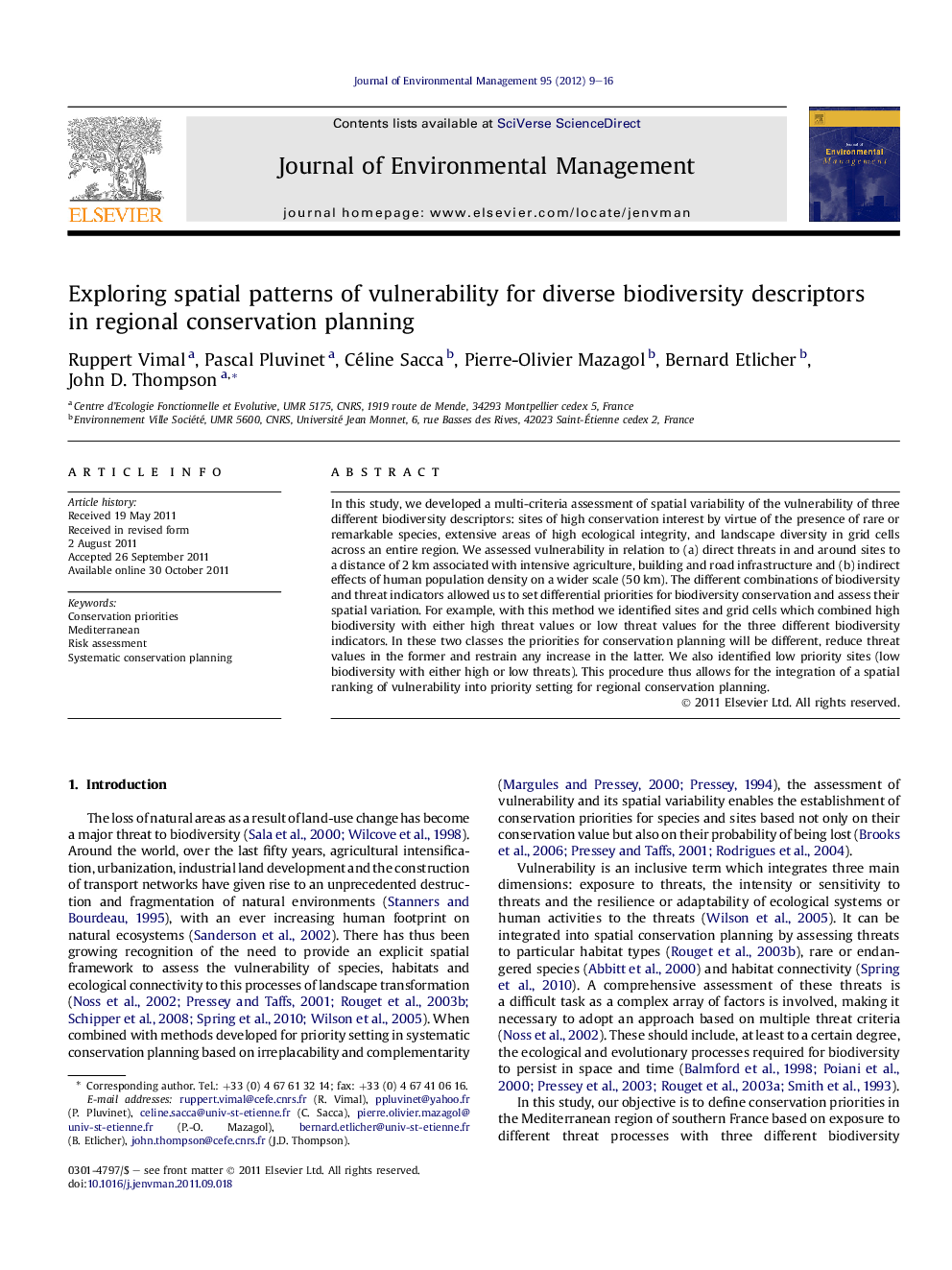| Article ID | Journal | Published Year | Pages | File Type |
|---|---|---|---|---|
| 1056915 | Journal of Environmental Management | 2012 | 8 Pages |
In this study, we developed a multi-criteria assessment of spatial variability of the vulnerability of three different biodiversity descriptors: sites of high conservation interest by virtue of the presence of rare or remarkable species, extensive areas of high ecological integrity, and landscape diversity in grid cells across an entire region. We assessed vulnerability in relation to (a) direct threats in and around sites to a distance of 2 km associated with intensive agriculture, building and road infrastructure and (b) indirect effects of human population density on a wider scale (50 km). The different combinations of biodiversity and threat indicators allowed us to set differential priorities for biodiversity conservation and assess their spatial variation. For example, with this method we identified sites and grid cells which combined high biodiversity with either high threat values or low threat values for the three different biodiversity indicators. In these two classes the priorities for conservation planning will be different, reduce threat values in the former and restrain any increase in the latter. We also identified low priority sites (low biodiversity with either high or low threats). This procedure thus allows for the integration of a spatial ranking of vulnerability into priority setting for regional conservation planning.
► We develop a multi-criteria assessment of biodiversity and vulnerability. ► We assess vulnerability for different descriptors of biodiversity. ► Biodiversity descriptors cover species, ecological integrity and landscape diversity. ► We assessed vulnerability using population density, agriculture, buildings and roads. ► We identified priority sites by combining biodiversity and vulnerability.
